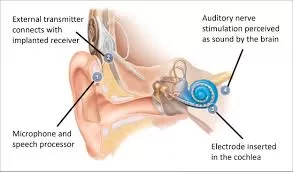Bengaluru, India – In a groundbreaking advancement in wearable technology, researchers from the Jawaharlal Nehru Centre for Advanced Scientific Research (JNCASR), Bengaluru, have developed a cutting-edge device that mimics the human body’s pain response to detect stress in real-time. This innovation holds the potential to revolutionize health monitoring and robotics by enabling smarter, more adaptive systems.
The wearable device is constructed using a flexible, stretchable material embedded with a network of silver wires. Unlike conventional sensors, it is designed to “learn” and adapt to repeated stress, much like the human nervous system.
Key Features of the Device
- Dynamic Adaptation: The device adjusts its electrical response over time, mirroring how the body becomes habituated to repetitive stress or pain.
- Neuromorphic Design: Inspired by nociceptors—specialized pain sensors in the human body—it can adapt to stimuli and “remember” stress events for improved response accuracy.
How It Works
When the stretchable material is elongated, small gaps form in the silver wire network, disrupting the electrical pathway. A pulse of electricity is applied to reconnect the network, effectively “remembering” the stress event. With each stretch, the device refines its response, becoming more adept at handling stress over time.
This seamless integration of sensing and adaptive response within a single unit sets it apart from traditional sensors, which typically rely on external components or complex systems.
Potential Applications
This adaptive stress-sensing technology has far-reaching implications in various fields:
- Healthcare: Continuous, real-time monitoring of stress levels in patients, allowing doctors to better manage high-risk scenarios and chronic stress conditions.
- Robotics: Improving human-machine interaction by enabling robots to mimic human-like sensory responses. This innovation could lead to safer, more intuitive robots capable of adapting to collaborative environments.
The research, published in Materials Horizons by the Royal Society of Chemistry, emphasizes the technology’s transformative potential. By enabling robots to “sense” stress, it paves the way for more responsive and intuitive robotic systems.
Toward a Human-Centric Future
This breakthrough marks a significant step toward creating intelligent, adaptive technologies that emulate human sensory systems. By integrating stress detection and response capabilities into wearable and robotic technologies, researchers are laying the groundwork for advancements that are both human-centric and transformative.
As this innovation progresses, it promises to reshape the landscape of healthcare, robotics, and wearable technology, bringing us closer to a future where machines and humans coexist seamlessly.












